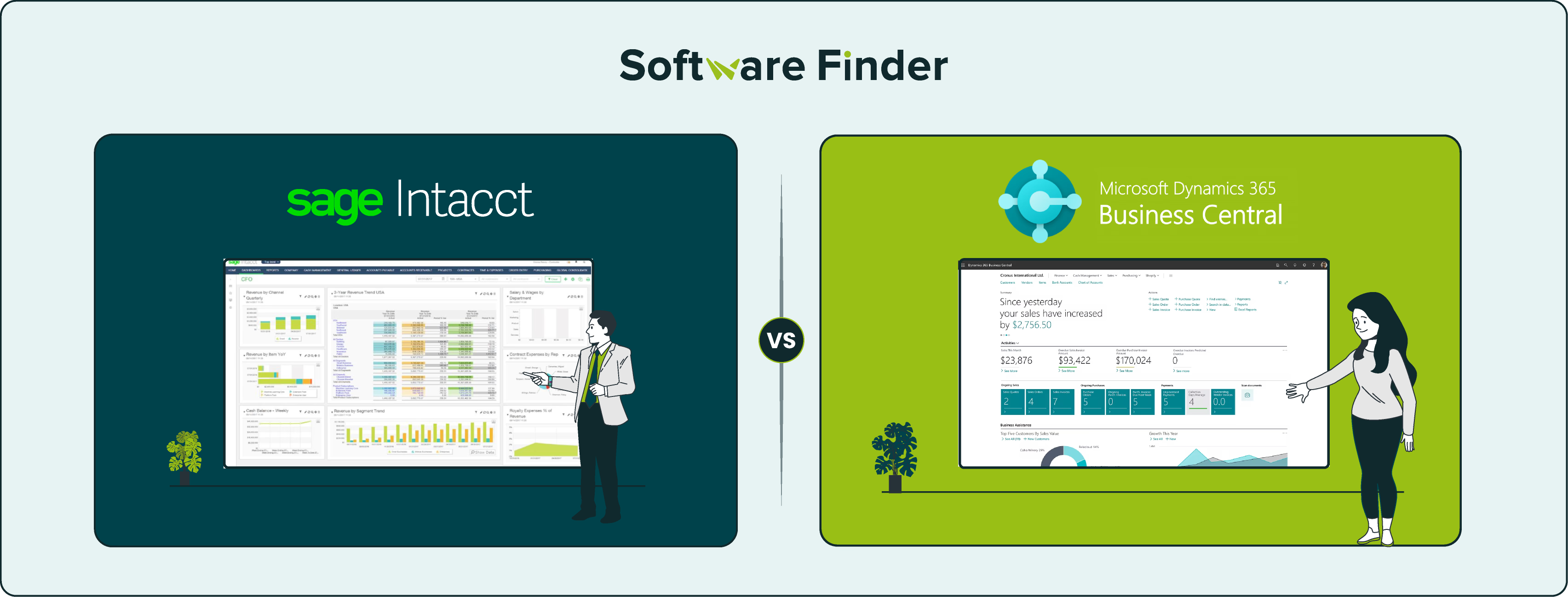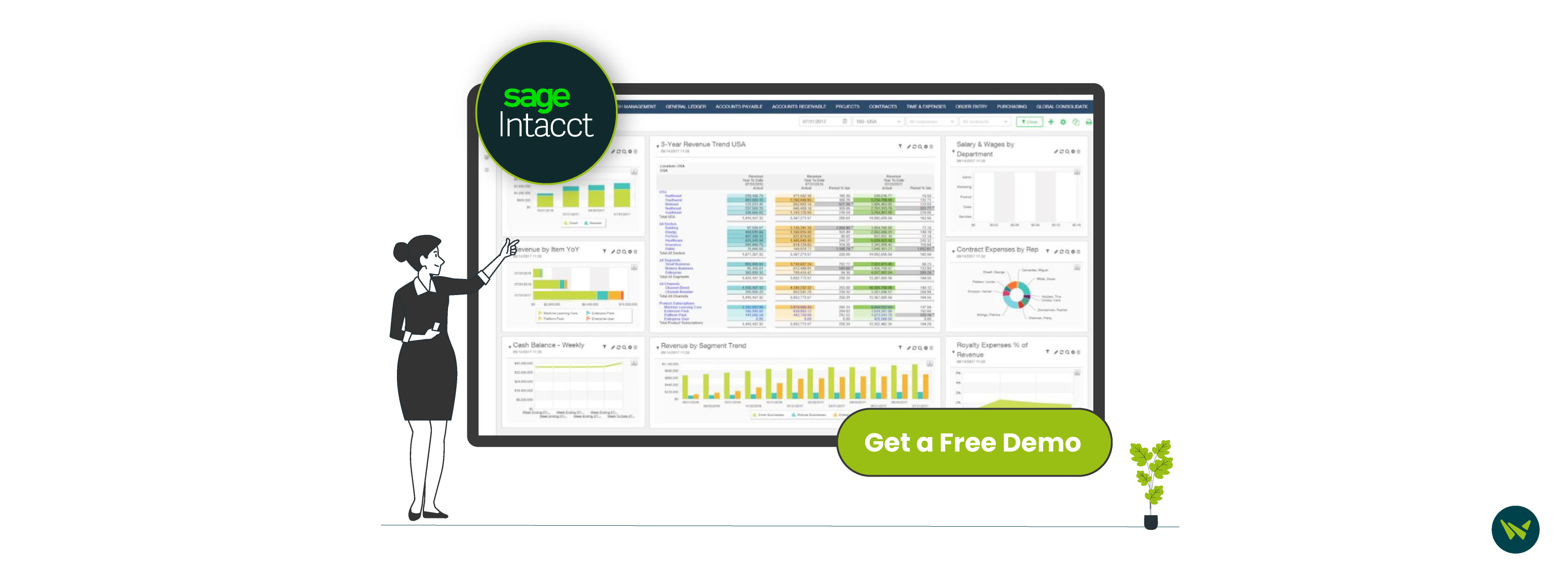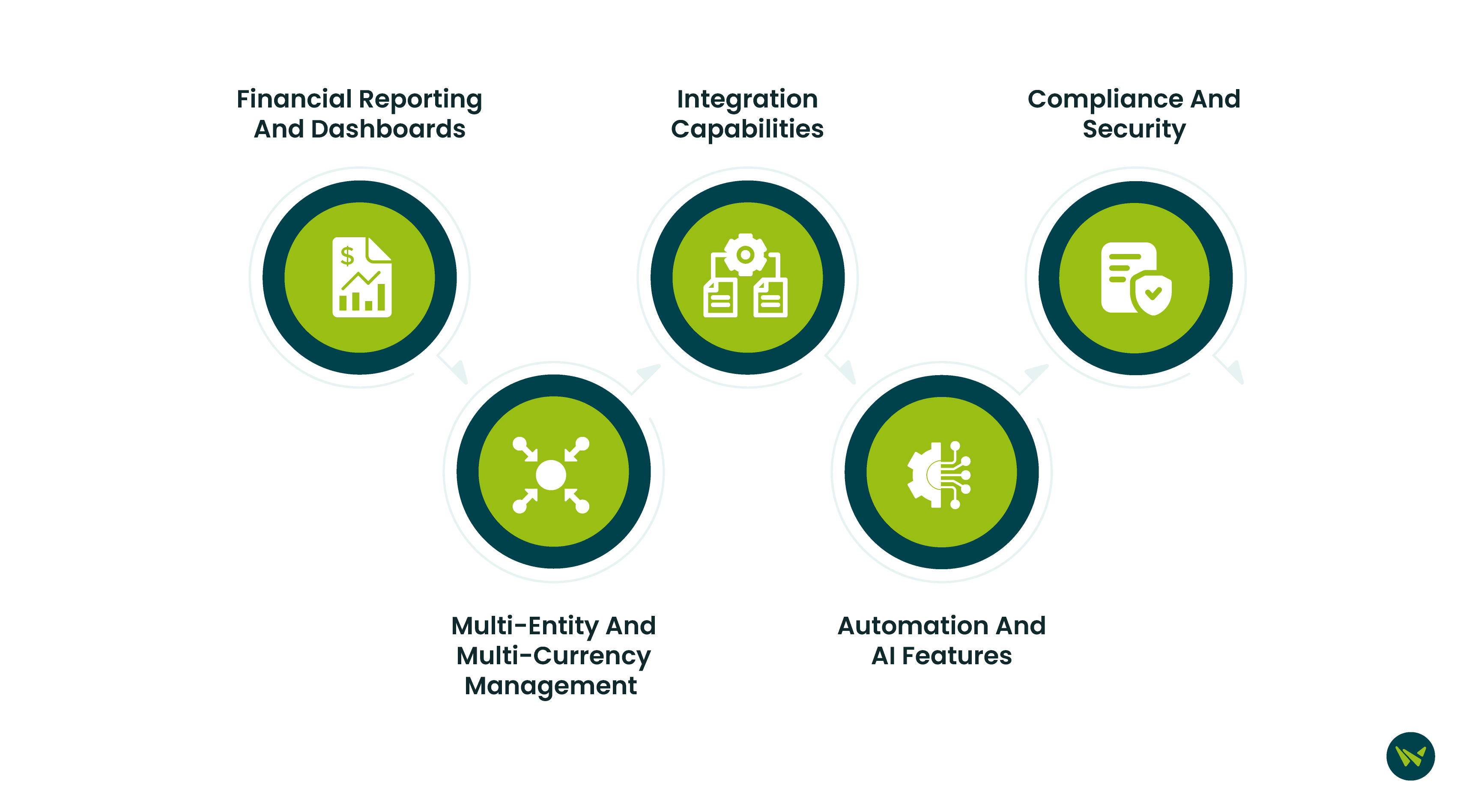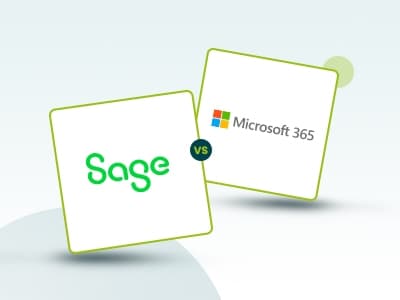
The global accounting software market is gaining serious momentum, projected to grow from $18.4 billion in 2024 to $20.18 billion in 2025—a sharp 9.7% annual increase. As businesses double down on automation and real-time financial visibility, cloud platforms like Sage Intacct and Microsoft Dynamics 365 Business Central are leading the charge.
Both are widely adopted for their strong financial management tools—Sage Intacct for its deep accounting focus and Business Central for its built-in Microsoft 365 connectivity, making them a logical comparison for growing businesses.
In this guide, we’ll compare both software, their functionalities, unique features, pricing, pros, and cons to help you make a confident, well-informed decision.
Feature | Sage Intacct | Business Central |
Financial Reporting And Dashboards | Offers 150+ built-in reports and 8-dimensional general ledger | Provides real-time reports and Power BI-driven analytics |
Multi-Entity And Multi-Currency Management | Automates global consolidations and inter-company eliminations | Supports multiple currencies and centralized entity management |
Integration Capabilities | Connects with 350+ tools like ADP, Emburse, and Workforce Go | Natively integrates with Microsoft 365 and Power Platform |
Automation And AI Features | Speeds up AP with AI-powered invoice processing and duplicate checks | Uses Microsoft Copilot to automate workflows and forecasting |
Compliance And Security | Certified for ISO 27001, HIPAA, PCI DSS, and GDPR readiness | Delivers enterprise-grade encryption and global compliance tools |
Pricing Model | Customized pricing | Subscription-based pricing |

Sage Intacct is a cloud-based financial management solution built to help businesses handle core accounting with greater speed and accuracy. Developed for growing organizations, it offers automation, real-time visibility, and streamlined processes to support smarter financial decision-making. Sage Intacct is also the only financial software endorsed by the American Institute of Certified Public Accountants (AICPA), highlighting its reliability and industry trust.
In addition to this distinction, the platform received the 2025 TrustRadius Buyers Choice Award for outstanding customer satisfaction. It was also named Geography and Global AWS Partner of the Year in 2024, further cementing its reputation for innovation and cloud leadership.
Standout Features

- Forms And Operational Flows: Sage Intacct includes a form builder and self-service portals to digitize workflows like approvals and data sharing. It improves operational efficiency and maintains data accuracy in financial processes
- SaaS Metrics Dashboards: Built for SaaS companies, these dashboards track metrics like customer acquisition cost and churn rate, key for investor reporting and performance analysis
- FACTS Integration For Educational Institutions: This feature syncs tuition and other payments with the general ledger and financial dashboards, streamlining accounting for educational institutions
Pros And Cons
Pros:
- Provides an extensive feature set
- Offers tools that simplify and improve financial management
- Easy to copy the previous ‘Purchase Requisitions’ for new ones
Cons:
- Rectifying errors can be tricky
- Drop-downs can occasionally freeze
Microsoft Dynamics 365 Business Central is a comprehensive cloud-based business management solution designed to help small and mid-sized organizations streamline their financial operations. Tailored for accountants and finance professionals, it integrates seamlessly with Microsoft 365 applications like Excel and Outlook, enhancing productivity and collaboration.
With built-in AI capabilities through ‘Microsoft Copilot’, Business Central automates routine tasks, provides real-time insights, and supports data-driven decision-making. Recognized as the best ERP system of 2024 by Forbes Advisor, it’s trusted by over 45,000 businesses worldwide to optimize and scale their accounting processes.
Standout Features

- Microsoft Copilot Integration: Business Central incorporates ‘Microsoft Copilot’, an AI-powered assistant that enhances productivity by automating tasks, providing intelligent suggestions, and streamlining workflows across various business processes
- Deep Integration With Microsoft Ecosystem: Seamless integration with Microsoft 365 applications facilitates unified workflows and data consistency across platforms
- Built-In Sustainability Management: Track greenhouse gas (GHG) emissions, set environmental goals, and analyze sustainability data using dedicated journals, ledgers, and reporting tools
Pros And Cons
Pros:
- Users appreciate its customizable dashboards
- Streamlines complex purchase order and invoice approvals
- Improves financial forecasting and analytics
Cons:
- Lacks feature import from Excel
- Setting up approval processes can be complex

Both Sage Intacct and Microsoft Dynamics 365 Business Central bring strong accounting capabilities to the table, but their strengths serve different business needs. Sage Intacct stands out for its multi-entity automation, deep financial reporting, and AICPA endorsement, making it ideal for finance-driven organizations needing specialized, scalable accounting tools.
On the other hand, Business Central offers powerful AI-driven features, deep Microsoft 365 integration, and a more predictable pricing model—perfect for growing businesses seeking all-in-one management with tight Microsoft ecosystem alignment.
The better choice ultimately comes down to your operational focus—if financial precision and advanced accounting features top your list, Sage Intacct may be the way to go. But if you need a broader business solution with AI, sustainability, and deep productivity integration, Business Central is hard to beat.
